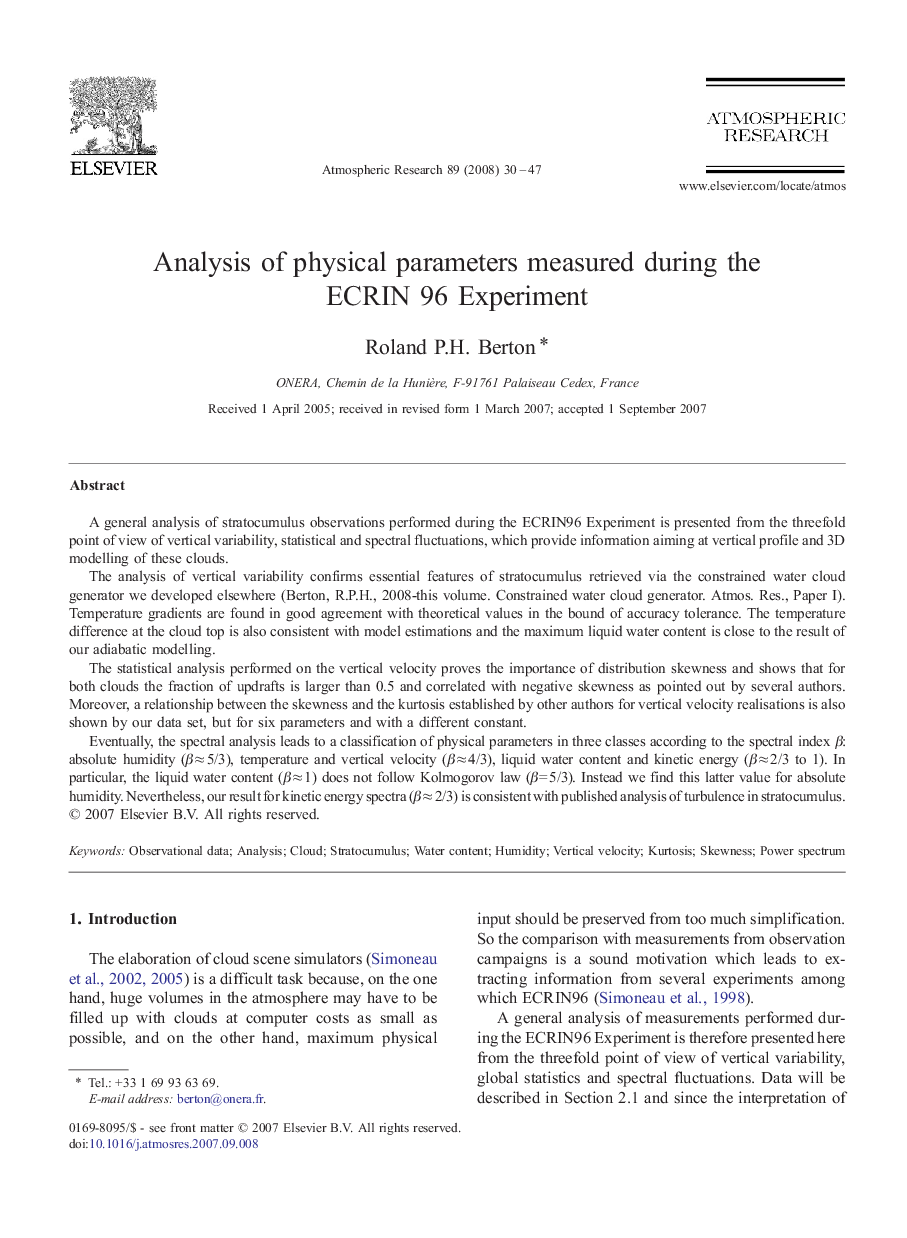| Article ID | Journal | Published Year | Pages | File Type |
|---|---|---|---|---|
| 4451196 | Atmospheric Research | 2008 | 18 Pages |
A general analysis of stratocumulus observations performed during the ECRIN96 Experiment is presented from the threefold point of view of vertical variability, statistical and spectral fluctuations, which provide information aiming at vertical profile and 3D modelling of these clouds.The analysis of vertical variability confirms essential features of stratocumulus retrieved via the constrained water cloud generator we developed elsewhere (Berton, R.P.H., 2008-this volume. Constrained water cloud generator. Atmos. Res., Paper I). Temperature gradients are found in good agreement with theoretical values in the bound of accuracy tolerance. The temperature difference at the cloud top is also consistent with model estimations and the maximum liquid water content is close to the result of our adiabatic modelling.The statistical analysis performed on the vertical velocity proves the importance of distribution skewness and shows that for both clouds the fraction of updrafts is larger than 0.5 and correlated with negative skewness as pointed out by several authors. Moreover, a relationship between the skewness and the kurtosis established by other authors for vertical velocity realisations is also shown by our data set, but for six parameters and with a different constant.Eventually, the spectral analysis leads to a classification of physical parameters in three classes according to the spectral index β: absolute humidity (β ≈ 5/3), temperature and vertical velocity (β ≈ 4/3), liquid water content and kinetic energy (β ≈ 2/3 to 1). In particular, the liquid water content (β ≈ 1) does not follow Kolmogorov law (β = 5/3). Instead we find this latter value for absolute humidity. Nevertheless, our result for kinetic energy spectra (β ≈ 2/3) is consistent with published analysis of turbulence in stratocumulus.
